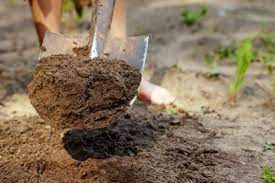Clay soil tends to get a bad reputation in gardening, but it’s often misunderstood. Some gardeners swear by it, while others struggle with its dense, challenging nature. But one of the most common questions that arises is whether clay soil is acidic. Understanding the pH of your soil is crucial because it directly affects plant health and growth. In this article, we’ll dive deep into the nature of clay soil, unravel the truth about its acidity, and offer practical tips for managing your garden’s soil pH.
Understanding Clay Soil
What Is Clay Soil?
Clay soil is composed of fine mineral particles that pack together tightly, leaving little room for air or water to move through. This soil type is known for its heavy, dense texture, which can be both a blessing and a curse for gardeners. On one hand, clay soil is rich in nutrients, as it holds onto minerals like potassium, calcium, and magnesium. On the other hand, its compact nature can lead to poor drainage, waterlogging, and root rot if not properly managed.
Benefits and Challenges of Gardening with Clay Soil
Gardening with clay soil presents unique challenges, but it also offers some benefits. One major advantage is its ability to retain moisture and nutrients, which can be beneficial during dry spells. However, the same characteristics that make clay soil nutrient-rich can also make it difficult to work with. Poor drainage, compaction, and slow warming in the spring are common issues that gardeners face. Understanding these traits is the first step in determining whether your clay soil might be acidic and how to manage it effectively.
The Science Behind Soil Acidity
What Does “Acidic Soil” Mean?
Soil acidity is measured by pH, a scale that ranges from 0 to 14, with 7 being neutral. Soils with a pH below 7 are acidic, while those with a pH above 7 are alkaline. The pH level of soil affects the availability of nutrients to plants and the activity of soil organisms. For example, in acidic soils, essential nutrients like phosphorus may become less available to plants, potentially stunting their growth.
Factors That Influence Soil Acidity
Several factors can influence the acidity of soil, including natural processes and human activities. In regions with high rainfall, leaching can cause the soil to become more acidic over time. Organic matter decomposition also produces acids that can lower soil pH. Additionally, the use of certain fertilizers, particularly those high in ammonium, can contribute to soil acidity. Understanding these factors is key to managing your garden’s soil health.
Is Clay Soil Typically Acidic?
General pH Range of Clay Soil
Clay soils can vary widely in their pH levels depending on the location and environmental conditions. While some clay soils may be acidic, others can be neutral or even alkaline. The general pH range for clay soils is typically between 5.5 and 7.5. In areas with heavy rainfall, clay soil is more likely to be acidic, whereas in drier regions, it may be neutral or slightly alkaline.
Common Misconceptions
A common misconception is that all clay soil is acidic. This is not necessarily true. The pH of clay soil depends on many factors, including the parent material from which the soil is derived, the amount of organic matter present, and the local climate. For instance, clay soils in regions with limestone bedrock may naturally be more alkaline. It’s important not to assume the acidity of your soil based solely on its texture.
Testing Your Clay Soil’s pH
How to Test Soil pH
Testing your soil’s pH is simple and can be done in several different ways. Home test kits are widely available and provide a quick way to determine soil pH. These kits typically involve mixing a soil sample with a chemical solution that changes color based on the pH level. For more accurate results, you can send a soil sample to a local agricultural extension service or a professional laboratory.
Interpreting the Results
Once you have your soil pH results, it’s important to understand what they mean for your garden. If your clay soil is acidic (pH below 7), you may need to take steps to adjust it, depending on the plants you wish to grow. Some plants, like blueberries and azaleas, thrive in acidic soil, while others, such as vegetables and most flowering plants, prefer a more neutral pH.
Managing Soil Acidity in Clay Soil
Amending Acidic Clay Soil
If your soil test reveals that your clay soil is acidic, don’t worry—there are several ways to amend it. One common method is to add lime, which raises the soil’s pH by neutralizing acidity. The amount of lime needed depends on the current pH level and the type of clay soil you have. Organic matter, such as compost, can also help improve soil structure and gradually increase pH levels over time. For additional guidance on improving soil drainage, check out our article on How to Make Well-Drained Soil for Plants.
Planting Choices for Acidic Clay Soil
If you decide not to amend your soil, or if you want to take advantage of its natural acidity, consider planting species that thrive in acidic conditions. Plants like rhododendrons, camellias, and ferns are well-suited to acidic clay soils. By choosing the right plants, you can create a thriving garden that works with your soil rather than against it.
For a broader perspective on soil types and their management, you might find it useful to read Understanding Soil Types for Better Gardening, which offers in-depth information on various soil types and their implications for gardening.

